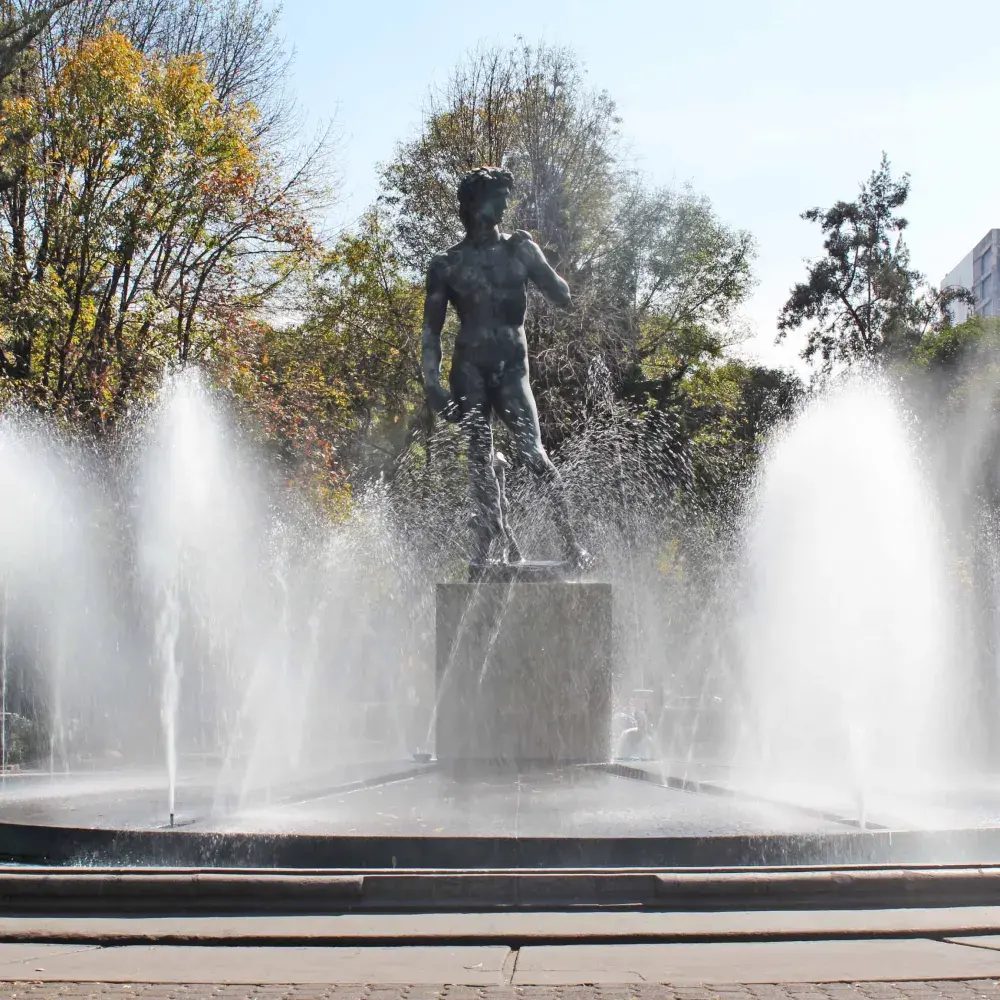.webp)
.webp)

Art

July 18, 2025

Colima 71
A Cultural Day in
Some neighborhoods are destinations in themselves, and Roma Norte, Mexico City, is one of them. With its tree-lined streets, historic buildings, and vibrant cultural scene, this district has become the creative heart of CDMX. Here, every corner tells a story, every café is a refuge for artists, and every gallery is a window into contemporary art.
What better way to reconnect with your city than by spending a cultural day in Roma Norte, Mexico City, ending with a luxurious night at Colima 71, our boutique hotel that embodies the essence and soul of the neighborhood?
Let’s start the day with a tour of the places that make Roma Norte, Mexico City, an epicenter of creativity and style.
- Breakfast at Panadería Rosetta, where their iconic guava roll and specialty coffee prepare you for the day.
- Stroll through Plaza Río de Janeiro, an urban oasis surrounded by historic mansions.
- Explore contemporary art galleries that have put Roma on the cultural map.
- Visit MODO (Museo del Objeto del Objeto), a unique space that narrates Mexico’s history through everyday objects.
- Indulge at Máximo Bistrot, where French cuisine fuses with Mexican ingredients.
- Return to Colima 71, your boutique hotel in Mexico City, to unwind in a studio designed for deep relaxation.
One of the great attractions of Roma Norte, Mexico City, is its architecture. The neighborhood boasts some of the finest examples of Art Deco in Mexico, with buildings that blend geometric lines and ornamental details, such as:
Edificio Basurto (Av. Álvaro Obregón): A 1930s icon with its stepped façade.
Casa Lamm: A Porfirian-era palace adapted into an Art Deco-style cultural center.
Plaza Luis Cabrera: Surrounded by buildings reflecting the transition between the Porfiriato and modernity.
Walking these streets is like traveling through time, where every façade tells a story of art and modernity.
Roma Norte isn’t just a bohemian neighborhood—it’s an epicenter of contemporary art in CDMX. Its galleries, many hidden in restored mansions, offer a mix of tradition and avant-garde.
Founded in 2012 as an extension of its Madrid counterpart, this gallery fosters a dialogue between Spanish and Mexican art. Its walls have showcased everything from conceptual photography by emerging artists to bold installations by established creators. What sets it apart is its rigorous curatorial approach, with exhibitions that explore identity and migration through works that defy physical and cultural borders.
With over 340 exhibitions and 1,850 artists in its history, Aguafuerte is an independent institution that has resisted fleeting trends. Its two venues (one in a Porfirian-era mansion) serve as experimental labs, where traditional engraving coexists with NFTs, and octogenarian muralists share space with feminist collectives. Its annual auction is legendary—pieces by Francisco Toledo and Leonora Carrington have found new homes within its walls.
In this self-managed space, artists work in full view of the public. Serigraphy workshops, spontaneous performances, and talks with creators are the norm. Its philosophy: "Art shouldn’t be behind glass." A visit here might coincide with a sculpture being cast or a debate on digital art—ideal for those seeking raw, unfiltered experiences.
Founded in 2017, MAIA rejects the traditional gallery format. Its exhibitions are sensory experiences: scents, sounds, and projections immerse the viewer. They’ve taken installations to Roma rooftops and even Chiapas jungles. Their residency program attracts artists like Rafael Lozano-Hemmer, who has transformed their façade with interactive lights.
This collective operates under one premise: "To create is a political act." Their exhibitions often include workshops for migrants or debates on ecology. The physical space is almost secondary—what matters are the "detonator-objects" that linger in the viewer’s mind. One of their most talked-about pieces was a garden of endemic plants growing amid construction rubble.
In Roma Norte, museums are more than exhibition spaces—they’re windows to parallel universes. Here, history meets avant-garde, and the tangible merges with the digital in a cultural offering that defies expectations. From collections tucked into Porfirian mansions to installations that blur the line between art and technology, these venues share one DNA: to provoke wonder through memory and innovation.
While some preserve relics of the past, others bet on experiences that transform with each visitor. But all confirm one truth: in this neighborhood, art isn’t just observed—it’s lived.
This 1911 mansion safeguards the legacy of the Mexican chronicler: incunabula, portraits of viceroys, and even the first phonograph to arrive in Mexico. Each object is arranged as it was in its golden age, creating the illusion that Tovar de Teresa might walk in at any moment. On Thursdays, experts give talks on early photography in the library.
This isn’t a traditional museum. Each room is an interactive universe: in one, you jump on digital clouds; in another, you paint with light on reactive walls. The shift between "day" mode (pastel colors) and "night" mode (psychedelic neon) completely transforms the experience. Perfect for breaking free from the solemnity of the art world.
Founded in 1949 by Diego Rivera and David Alfaro Siqueiros, this space is a temple of muralism and political graphics. Its rotating exhibitions display everything from unpublished sketches by Dr. Atl to photomontages from 1970s cultural guerrilla movements. Sundays feature engraving workshops with antique presses.
Roma Norte, Mexico City, is more than just a neighborhood—it’s a cultural and architectural journey. And what better way to experience it than with a getaway at Colima 71, our boutique hotel in Mexico City that makes you feel at home while offering the luxury of an exclusive destination?
After a day of exploring La Roma, there’s nothing better than retreating to an intimate, comforting space that blends design and authenticity. Colima 71 is the ideal choice:
Book your stay and experience Roma Norte like never before.


Colima 71

Colima 71

September 12, 2025
READ ARTICLE


.webp)

Experiences

Colima 71

August 22, 2025
READ ARTICLE

